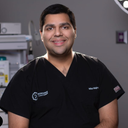Answers (37)
From board-certified doctors and trusted medical professionals
Dr. Jeff Rapaport, MD

Dr. Jeff Rapaport, MD
Dermatologic Surgeon, Board Certified in Dermatology
Answer
Dr. Christopher Balgobin, MD

Dr. Christopher Balgobin, MD
Physician, Board Certified in Family Medicine
Answer
Dr. Cameron Chesnut, MD, FAAD, FACMS

Dr. Cameron Chesnut, MD, FAAD, FACMS
Dermatologic Surgeon, Board Certified in Dermatology
Answer
Dr. Mike Majmundar, MD

Dr. Mike Majmundar, MD
Board Certified Facial Plastic Surgeon
Answer
Dr. Shanthala Shivananjappa, MD

Dr. Shanthala Shivananjappa, MD
Physician, Board Certified in Anesthesiology
Answer
Dr. Ran Y. Rubinstein, MD

Dr. Ran Y. Rubinstein, MD
Board Certified Facial Plastic Surgeon
Answer
Dr. Matthew Richardson, MD

Dr. Matthew Richardson, MD
Board Certified Facial Plastic Surgeon
Answer
Dr. J. Jason Wendel, MD, FACS

Dr. J. Jason Wendel, MD, FACS
Board Certified Plastic Surgeon
Answer
Dr. Sam Jejurikar, MD

Dr. Sam Jejurikar, MD
Board Certified Plastic Surgeon
Answer
More PRP for Hair Loss Questions
See all PRP for Hair Loss Q&AWE SEND PRETTY
EMAILS
What’s trending? Who’s turning heads? Which TikTok myths need busting? We’ve got you. No fluff, no gatekeeping—just real talk. Get our free, unfiltered newsletter.

